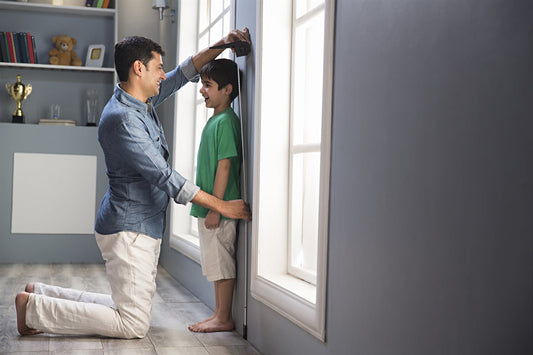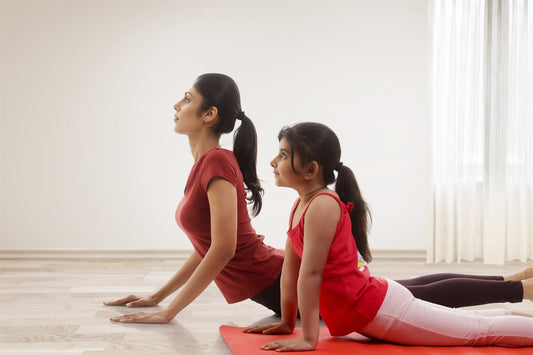
10 Activities For Your Child’s Brain Development
A few months ago, when I was busy in the kitchen, my 2-year-old came running to me. “Mamma, please come here; I want to show you something”, she said while pulling my hand. I was wondering about what it was going to be this time.
She was quiet for almost half an hour, and I was too time-pressed to check on her several times. When I had peeped once, she was busy opening the puzzle box I had gotten her the day before. She is an intelligent and naughty 2-year-old, a keen observer, a quick imitator, and an explorer-like most kids her age. She is always up to something, but I am not so worried because usually, she is not destructive or aggressive. But you never know what mischief a child is capable of, do you?

A fast train of thoughts started running through my mind; what could she have possibly done? Coloured the wall behind the curtain? Opened the cabinet and pulled out all the books? Holding my breath, I went on to check. I was stunned to see she had put the 36-piece farm floor jigsaw puzzle together correctly and perfectly. And she was explaining, “Mummy, this is a cow, horse, sheep, and duck.”
I was happy she could do it herself and proud of her achievement. She had raised her performance standards- from solving the smaller 6-10 piece puzzles to a big 36 piece one. And this was a giant leap and beyond my expectations.
My efforts were paying off. I recollected her paediatrician’s advice; she had said the first six years of a child’s life are significant for brain development and that you should provide them with a conducive environment and stimulate their brain activity to help them achieve their full potential. Do not hold your child back because you do not want to stress them with new activities or vocabulary or games.
Here's What I Did To Stimulate My Child’s Brain Activity
1. Communicate With Them
I used to talk to my daughter continuously (right from her birth won’t be an exaggeration). I used to label every action I was doing, right from standing up, sitting down, singing, cooking, etc. I also marked every object she was looking at like door, plate, stroller, shoes; feeling- like the wind, heat, cold; tasting- like sour, sweet, salty, etc. So, by the time she was nine months old, she had a good vocabulary, a good grasp of all the activities people did around her and understood different tastes.
2. Introduce Books, Storytelling And Narration
Books play a vital role in both brain development and language skills. They’re also the first step towards gross motor skill development (holding books, turning pages). I had introduced cloth books & soft sponge books to her when she was two months old, board books from five months, and paper books after she turned a year old. She liked colourful objects, animals, birds & shapes till around nine months and then loved listening to simple short stories from illustrated books (no fairy tales). And activity books (match the shadows, pairing similar objects) after she turned 2.
3. Ask Questions To Stimulate The Thinking Process
As I introduced the books, I named the objects she was seeing in all the languages I knew. Then I gradually started describing them (shape, colour, use). I explained the environment in which they are found and constantly asked her questions. For example, pointing at a rabbit, instead of asking “what is this?” I asked her, “it has long ears, a short fluffy tail, is soft & white like cotton. What is it?”. I continued with the exercise even when we went out to some shop or mall. We played the “I spy” game in the house & outdoors. I would describe objects and ask her to identify them. It was fun.
4. Let Your Kids Explore - Touch, Feel, Smell, Taste
I encouraged the natural tendency that kids have to explore the world around them. (But of course, with discretion). I never stopped her from playing with stones or mud in the garden, things like tasting sour lime or bitter gourd, smell a flower on the plant, etc. She learned by herself that stones were hard, mud was soft, ice was cold, the paper could be torn with hands and rubber bands were elastic & so on. Things that were not safe for her we explained to her & kept out of reach- like touching a hot cup of tea could burn her skin, pressing against a glass door could break the glass, playing with a sharp object could hurt, etc.
5. Music-Dance-Physical Activity
Kids love music & I was not surprised the other day when she sang the whole song “lakdi ki kathi, kathi pe ghoda” and danced to the tune as well. She now sings quite a few songs & rhymes. It seems like she has a good ear for music because she has been listening to it since childhood. I also noticed that a soothing instrumental piece calms her down whereas a song like “lungi dance” excites her. So, dance becomes an excellent physical activity to channelise the never-ending energy of a kid, and singing & listening to songs becomes a great mental activity.
6. Building Event Memory, Associating Things & Situations
Kids these days use their smartphones very dexterously, and photos are their favourite part. Although I have limited her total gadget time (phone, iPad, TV) to 30-45 minutes, I make good use of the photos she sees to build her event memory. Whenever she sees some old photos, I describe to her the event. I tell her who all were present, which places we had visited, etc. After several repetitions, this activity has helped her build a memory of past events. She also recognises people from the photos even if she meets them after a long time. She has learned to associate certain things with specific events like lanterns with Diwali or Santa Claus with Christmas.
7. Independence
It was okay if she initially spilt a little food or water on the table, but she learned to hold her spoon & cup. It took a lot of time to wear shoes, most of the time, she put them on the wrong feet, but now she wears them perfectly. Kids figure out things themselves, and we need not tell them how to do it. We need to give them some time. I am happy my child eats independently, combs her hair, brushes her teeth, & wears her shoes. I always encouraged her to do these simple activities even if they were time-consuming initially and she couldn’t do them at all.
8. Age-Appropriate Toys, Art, And Craft
Use age-appropriate toys like building blocks, push & go toys, insert shapes in slots for gross motor skills development. Some simple paper-folding art, glueing stickers on papers, colouring can also help refine motor skills.
9. Logical Reasoning & Decision Making
Kids think logically, and we just have to encourage this to stimulate their brain activity and enhance their thinking process. I always try to reason things for her (wherever possible). And she has developed the same habit. I make her choose between two things at times- simple things like which dress she wants to put on or which game she wants to play- the decision-making is a good brain stimulator.
10. The Most Important - Excellent Nutrition
Good food is a key to good development and a good mood as well. A healthy body nurtures a healthy mind. Fortunately, my daughter is not a picky eater but there are days when she gives me a hard time.

A balanced nutritious diet is essential. Vegetables, seasonal fruits, eggs, pulses are all building blocks for a proper diet. Milk with #Junior Horlicks is also a great choice as it includes nutrients that support brain development, such as choline, iron, and iodine. It also contains nutrients that support physical growth, such as calcium, Vitamin D, Vitamin K, and proteins, and also nutrients to support healthy immune function such as Vitamin E, A, Selenium & Copper. You can design a wholesome diet with roti, rice, whole-grain bread, wheat pasta, curd, cheese and maybe a scoop of ice cream and some sweets once in a while.
A good blend of all these activities has brought my child a long way. She has a good grasp of language, her motor skills are developed, she sings, she dances, her concentration level has increased, and she has become a little more independent. A little effort from our end pays in the long run by making a child ready for his future.
# Junior Horlicks is a nutritional food supplement that helps meet your child’s nutritional requirements as part of the daily diet. This product is not an infant milk substitute or infant food for less than two years old. This product is not a meal replacement.
Related Tags
Related Products
-

Horlicks Junior Vanilla Flavour
Sold outHorlicks Junior Vanilla Flavour
500g JarRegular price ₹330.00Regular priceUnit price / per



